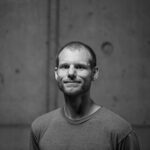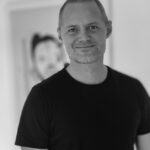
Team

Jens Pedersen is an Assistant Professor at the Aarhus School of Architecture. Jens recently concluded his industrial PhD with Odico Construction Robotics which researched robotic timber fabrication, on-site manufacturing and intuitive robotic instruction techniques. His research led to pattent pending technologies and was used to manufacture timber elements for 50 + houses. Currently at The Aarhus School of Architecture, he is researching how computation, robotics and vision systems can simplify the utilization of elements that doesn’t meet material standards in construction, such as discarded or reuse elements.
Scientific Chair

Gabriella Rossi is an Assistant Professor at CITA, Royal Danish Academy. Her research focuses on Machine Learning as an emerging modelling paradigm, and how it can change architectural practice. Her work and teaching emphasize architectural datasets and their applications for sustainable materials, performative design and adaptive robotic fabrication systems. She teaches the master programme Computation In Architecture at the Royal Danish Academy, and the AI and Architecture module at the MaCAD program at IaacC.

Anders Kruse Aagaard is an Associate Professor at Aarhus School of Architecture. Anders’s research focuses on materials and digital workflows in relation to architectural design and construction. This includes material properties and behaviours, their effect on design and design potential, and the connections between design, design representation, and reality. Anders’s material focus is wood, especially alternative wood resources, such as discarded wood resources, non-used and under-used wood species, and reused wood resources.

Mads Brath Jensen is an Assistant professor at the Department of Architecture, Design and Media Technology at Aalborg University in Denmark. He investigates design methods and procedures for establishing direct relations between creative design processes and interactive robotic fabrication, with emphasis on how cognitive design processes are influenced by interactive real-time human-material-robot processes. His research-based teaching has resulted in a series of research pavilions showcasing the interconnection between computational form-finding, material behaviour, thermal- and acoustic simulation, and fabrication techniques.

Markus Hudert is a researcher, designer, and educator working at the intersection of architectural structures and material systems. He joined Aarhus University in 2019 and is currently a Tenure Track Assistant Professor at the Department of Civil and Architectural Engineering. His research employs material and assembly driven design strategies, as well as algorithmic design and fabrication, for the development of circular timber construction systems.
Workshop Chair

Carl Eppinger is a Ph.D. candidate at CITA, Royal Danish Academy. His research concentrates on adaptive robotic fabrication for additive manufacturing of renewable, bio-based materials. Before Carl has worked at CITA while managing the Royal Danish Academy Robotics Laboratory. Before joining CITA Carl worked as a Research Associate for Philipp Eversmann at the Institute for Experimental and Digital Design and Construction at the University of Kassel, as well as a Research Assistant to Jonathan Wesley McGee and Sean Ahlquist at the University of Michigan.
.

Jakob Sieder-Semlitsch is an architect and fabricator. He is currently engaged as digital fabrication specialist at the Aarhus School of Architecture. He has previously taught and researched at the University of Innsbruck, SCI-Arc, and the Royal Danish Academy. Within his own practice LJLAB he develops biogenic building materials for construction. His passion lies in building tools for the production of architecture and everyday objects, aiming to find mechanical, virtual and actual solutions to contribute to a more inclusive, sustainably built future.

Niels Martin Larsen is an associate professor at the Aarhus School of Architecture. He holds a PhD in generative algorithmic techniques for architectural design, and his research focuses on how digital technologies revolutionise construction. He is developing new workflows for using irregular and discarded wood, such as irregular tree trunks, in architecture to promote biodiversity and climate-friendly construction methods. By engaging scanning methods and digital processing methods, the research showcases how irregular materials can be effectively used in design.


